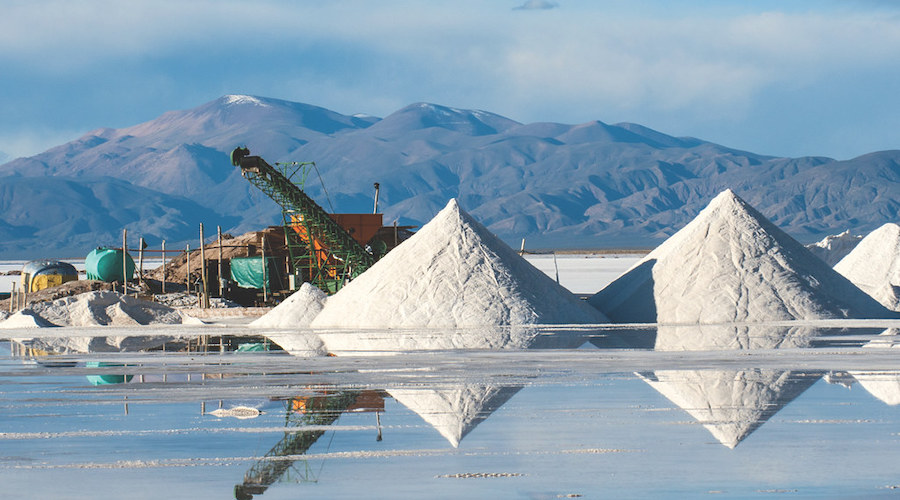
For all the money that’s poured into Argentina’s giant lithium deposits, the country has seen just one new mine come on stream in almost a decade. That’s about to change.
Four new projects will finally begin to churn out lithium in the weeks and months ahead, according to a yet-to-be released federal government time-line seen by Bloomberg News. That will almost double production capacity in Argentina, whose growth potential has long lured the attention of battery makers around the world.
The projects — built on salt lakes nestled in the Andes mountains in South America’s so-called lithium triangle — are a boon for new President Javier Milei, who desperately needs more export dollars to lift currency controls that are stifling Argentina’s crisis-prone economy.
Yet for global lithium markets, the extra production comes at a time when buyers are already well supplied, with inventories piling up amid the gloomy outlook for electric vehicle demand. Spot prices of lithium carbonate in China have slid to the lowest since August 2021.
Despite a flurry of prospecting and development, only three operations in Argentina currently export lithium. That’s still enough to have established the country as a major producer behind Australia, neighboring Chile and China. Of the three, only one is a newcomer — Minera Exar, which is majority owned by Ganfeng Lithium Group Co.
Now, Argentina is taking a genuine leap, with four new projects ready to begin full-scale operations and ramp up annual capacity by 79% to the equivalent of 202,000 metric tons, according to a Bloomberg breakdown of the unreleased government data.
The first of the new projects will be Eramet SA and Tsingshan Holding Group Co.’s Centenario Ratones, which is scheduled to hold an inauguration event next week, a Mining Department spokesperson confirmed. The others are: Posco Holdings Inc.’s Sal de Oro; Zijin Mining Group Co.’s Tres Quebradas; and Ganfeng’s Mariana.
While the new capacity won’t all be used straight away, it nevertheless represents a significant overhang in a market in which global production is estimated by Bloomberg Intelligence to total 1.4 million tons this year.
Rio Tinto Group is also aiming to have a 3,000-ton starter plant ready by the end of the year at its Salar del Rincon project, according to a presentation delivered by Santiago Cicchetti, Rio Tinto’s external affairs manager in Argentina, at a conference in Buenos Aires this week.
The June 26-27 conference was a hive of activity attended by top producers, prospectors, technology providers and provinces that have a big say over if and how natural resources in their territory get unearthed.
So far in Argentina, the lithium industry has centered on the provinces of Jujuy, Salta and Catamarca. But La Rioja, just to the south, is now making a push to tempt prospectors, Walter Gomez, president of provincial mining outfit Emse, said in an interview. La Rioja passed a controversial law last year allowing it to rescind mining acreage from any owners it deems to be land speculators uninterested in exploration.
The conference took place against the backdrop of much-awaited federal approval for Milei’s sweeping reforms, including a program of tax, currency and customs benefits for industrial investments that will benefit lithium developers.
